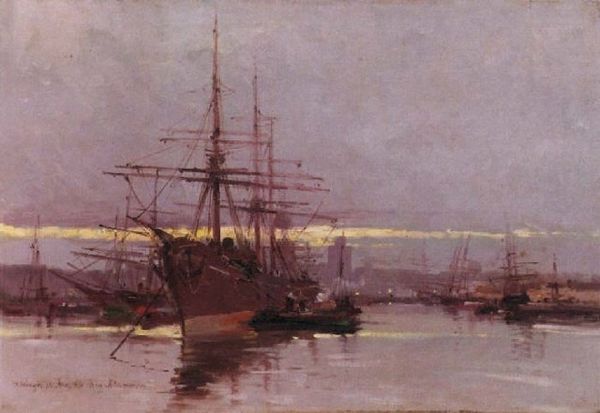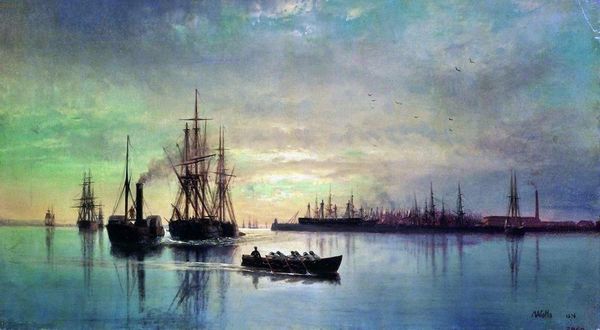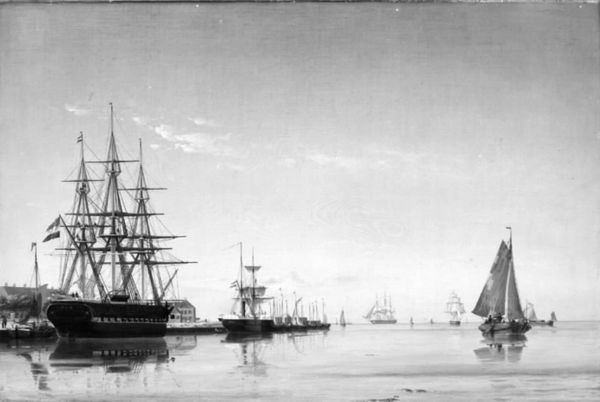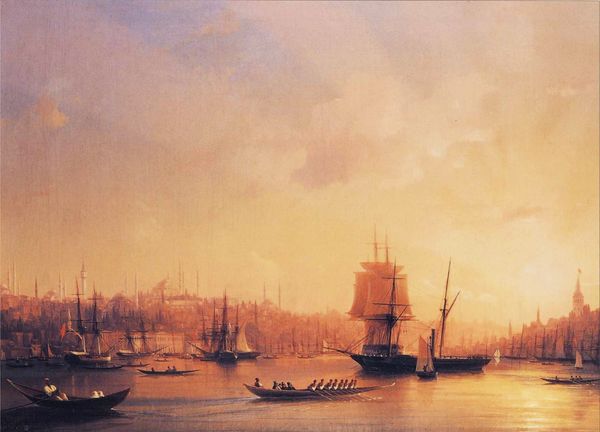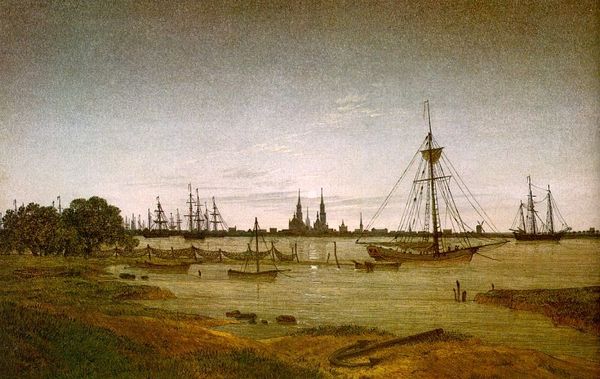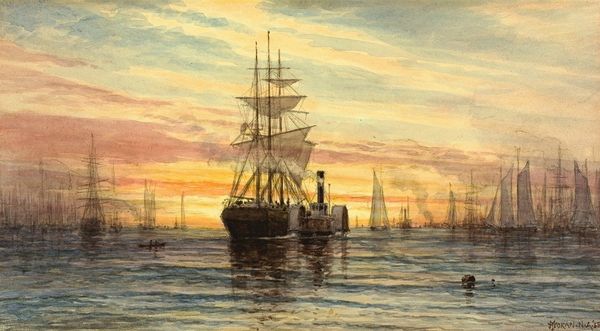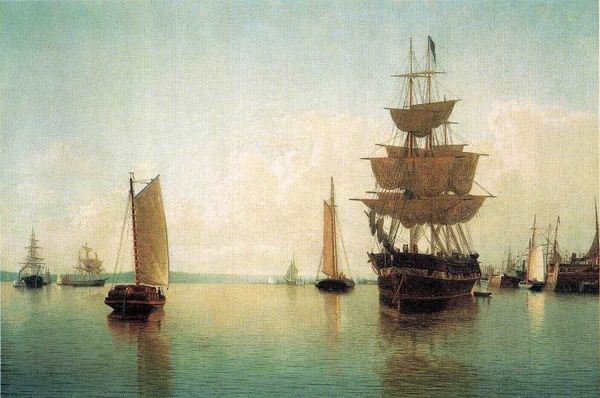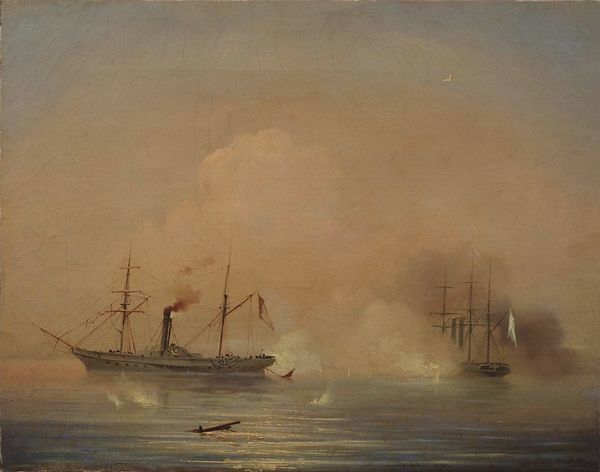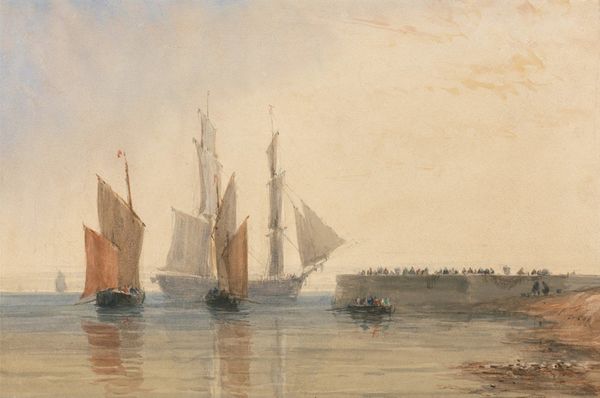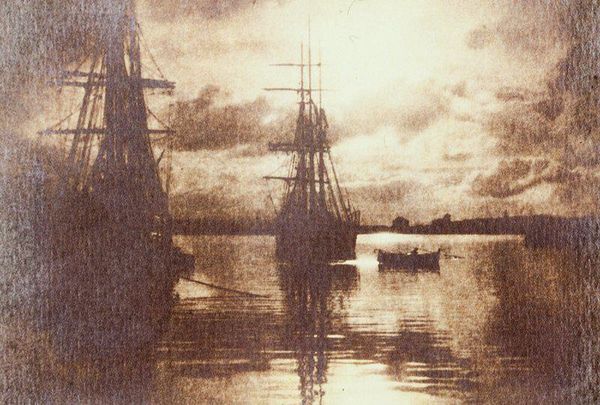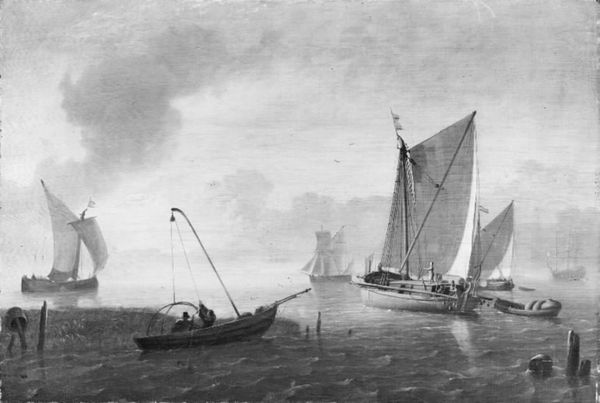
painting, plein-air, watercolor
#
painting
#
impressionism
#
plein-air
#
landscape
#
watercolor
#
watercolor
Copyright: Public domain
Thomas Eakins created "Drifting" using watercolor on paper, likely in the late 19th century. Watercolor has a delicate, transparent quality, perfectly suited to capturing the atmospheric effects of light and water. Eakins was fascinated with realism and depicting the world around him with accuracy. The watercolor technique allows for a fluidity that mirrors the movement of the water and the drifting boats. The way watercolor is applied – in thin washes – creates a sense of depth and light, giving the scene a dreamlike quality. Consider how this medium contrasts with the industrial might of the ships depicted. During this period, the shift from sail to steam power transformed maritime labor, impacting sailors and shipbuilding workers. Eakins' choice of watercolor, with its inherent fragility, subtly underscores the changing nature of work and industry in his time. It reminds us that even the most imposing structures are subject to the ebb and flow of time.
Comments
No comments
Be the first to comment and join the conversation on the ultimate creative platform.
